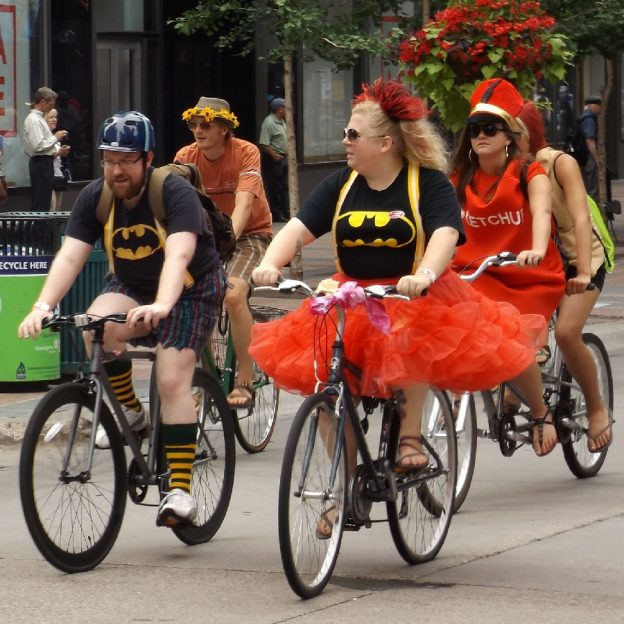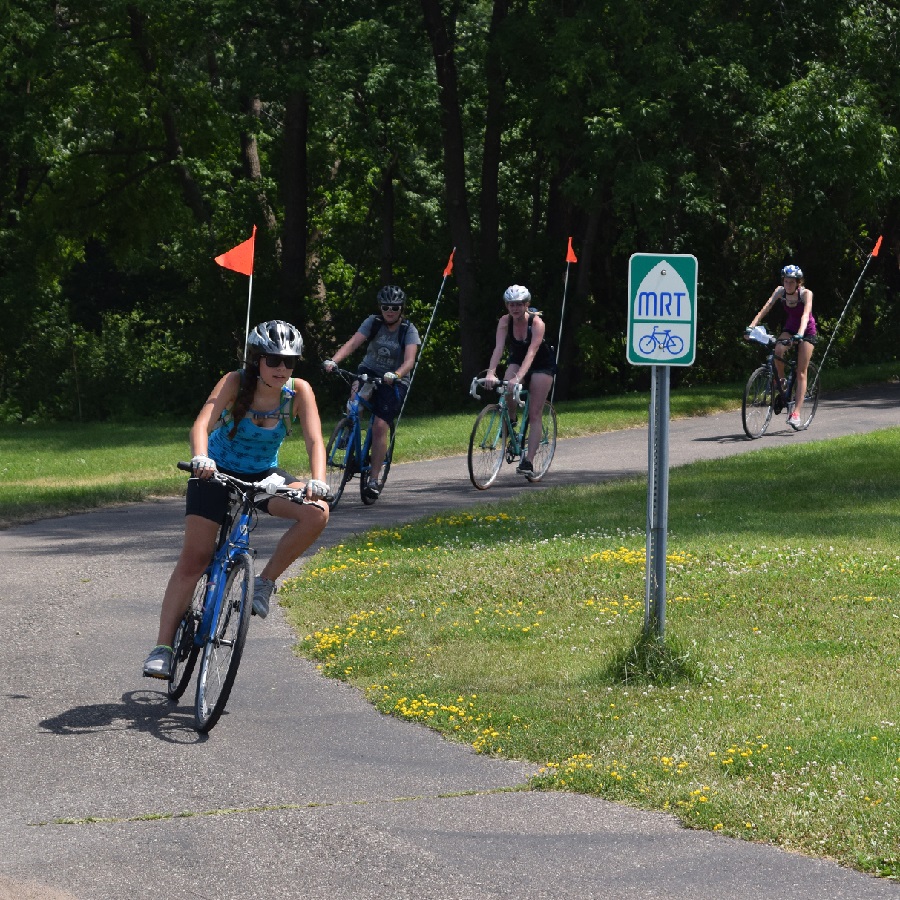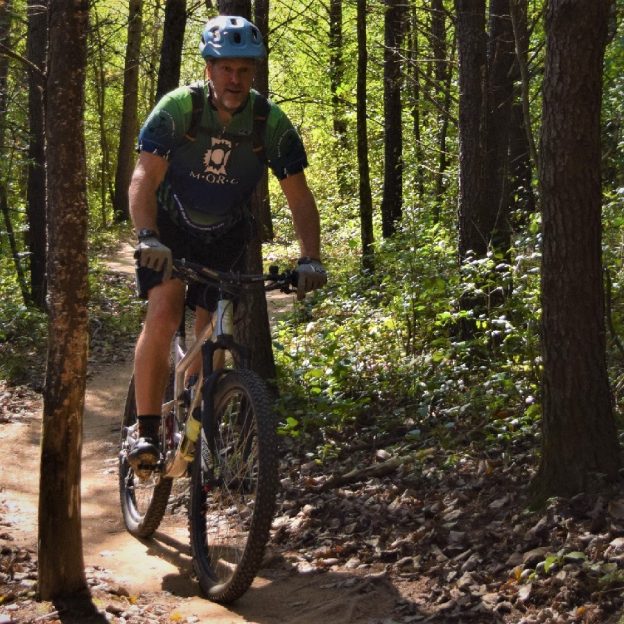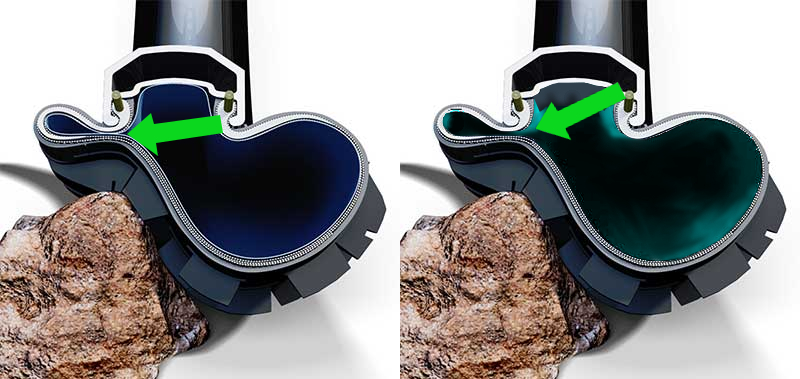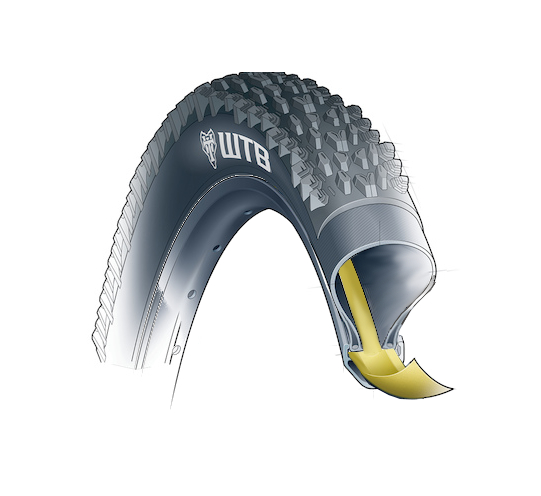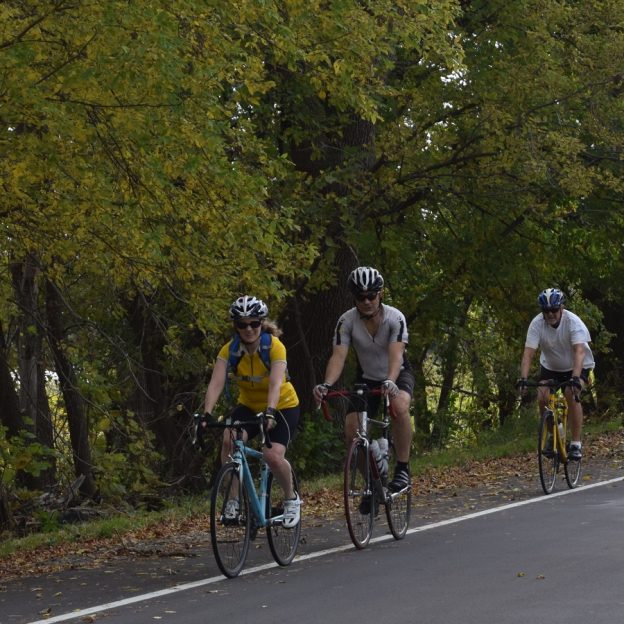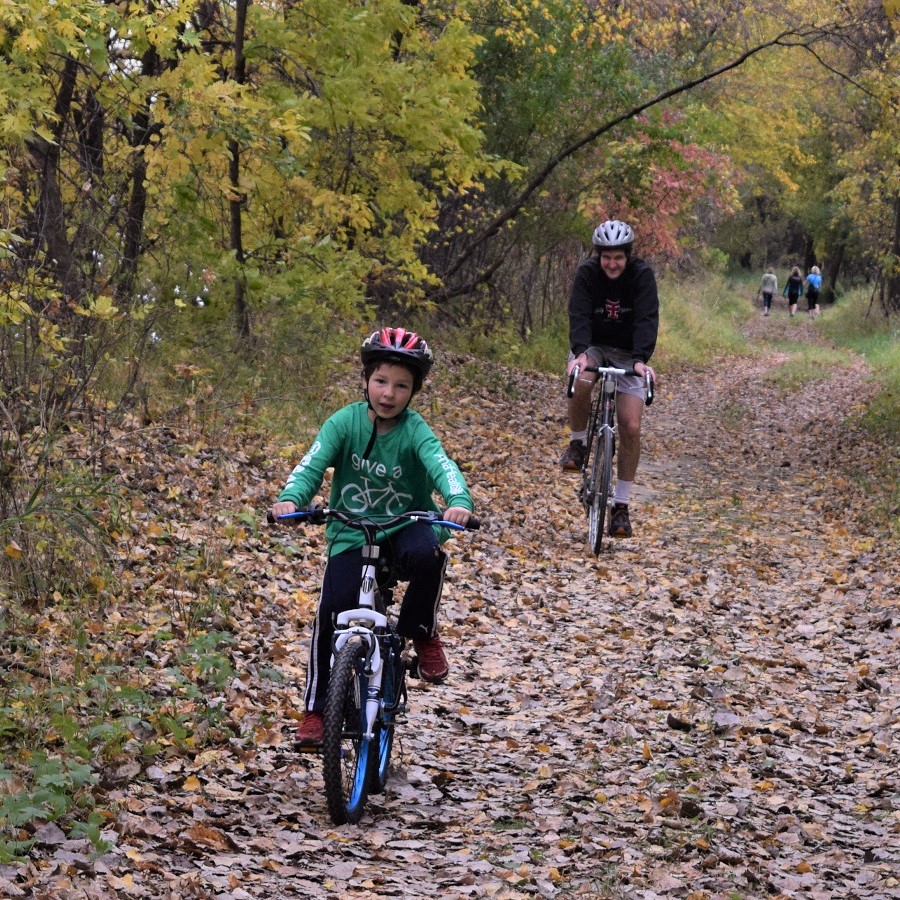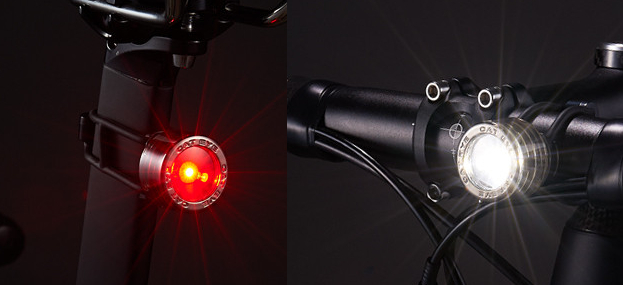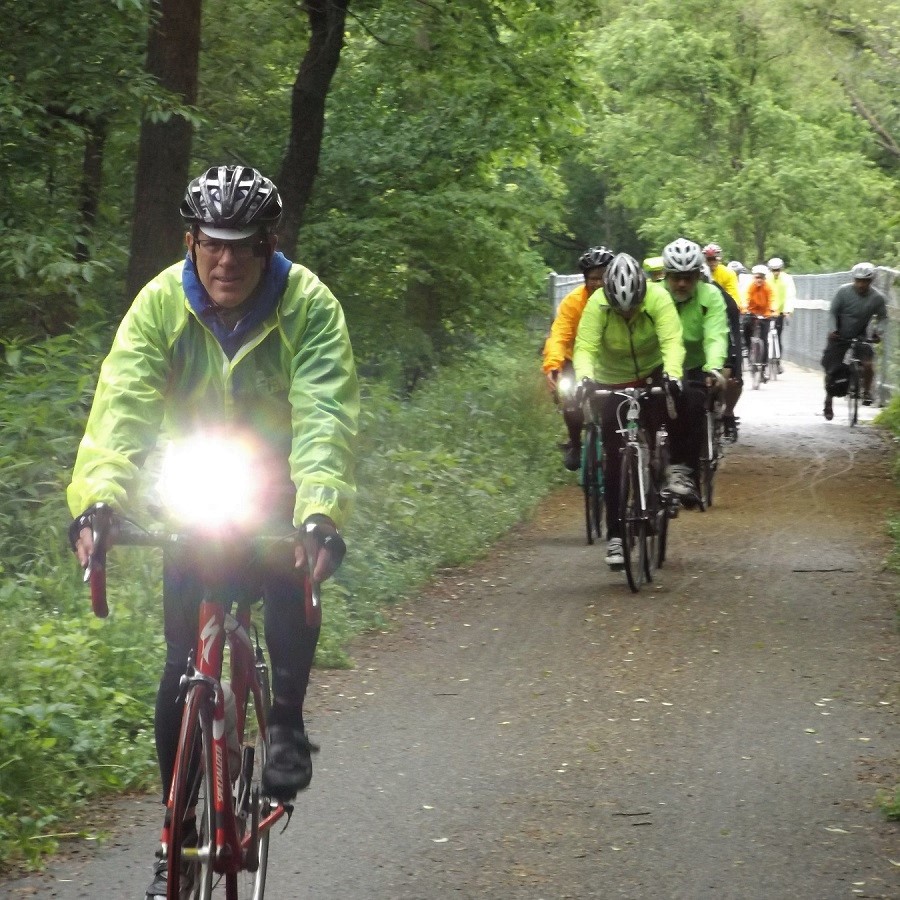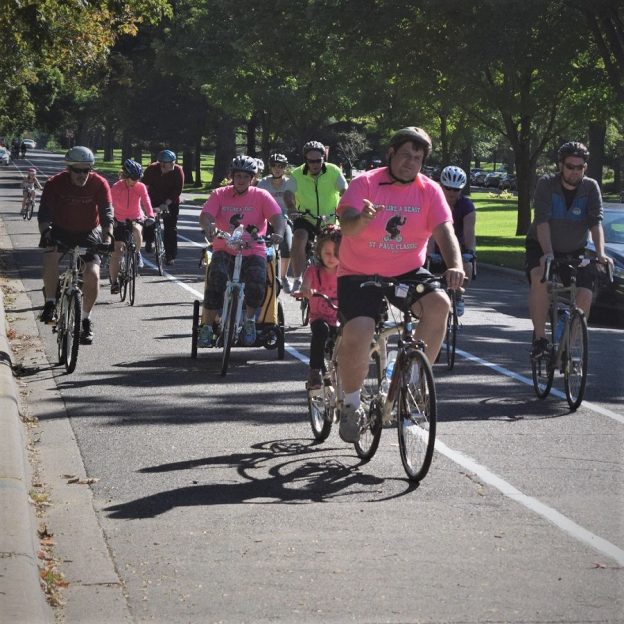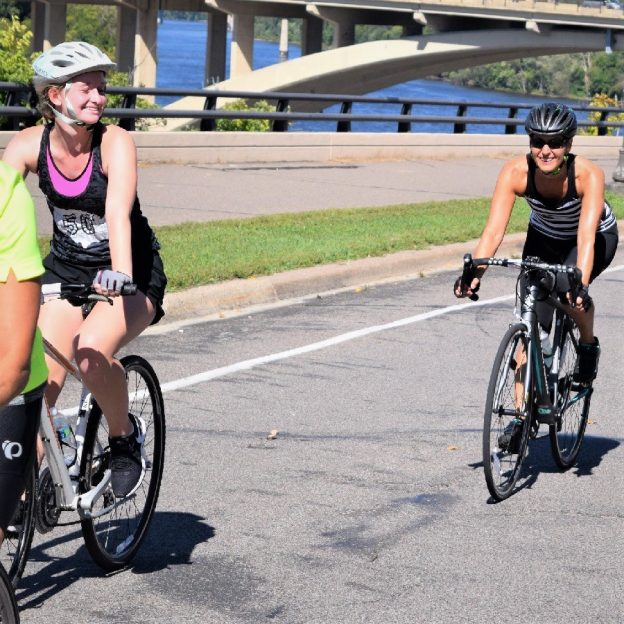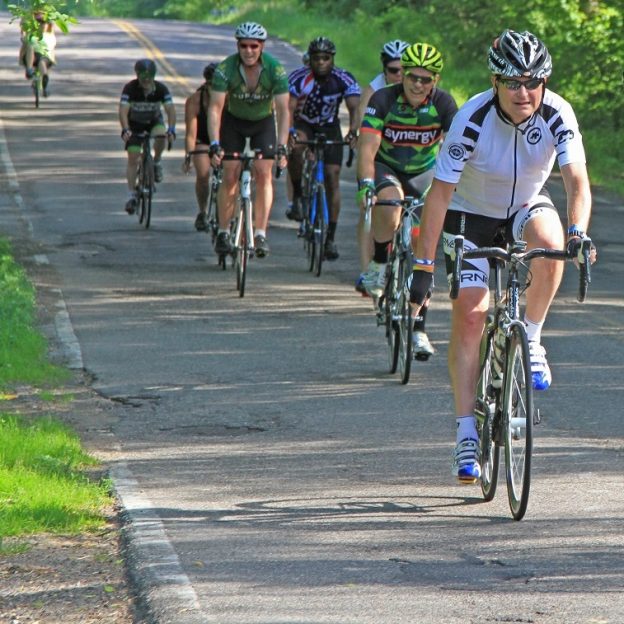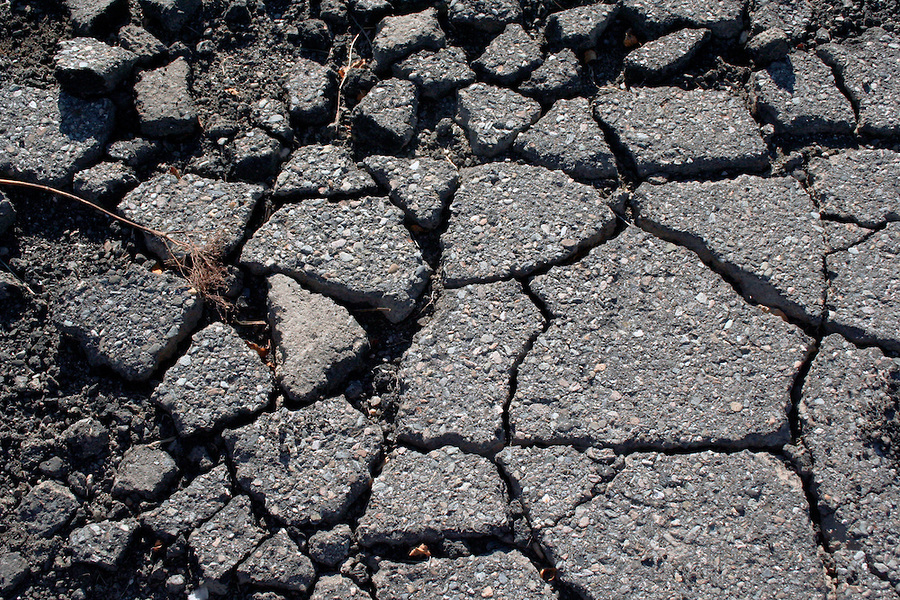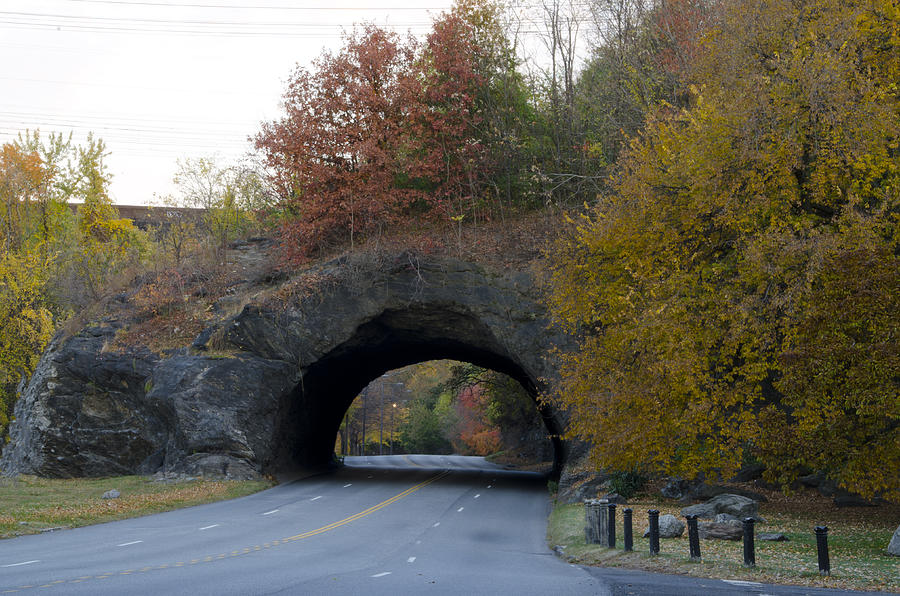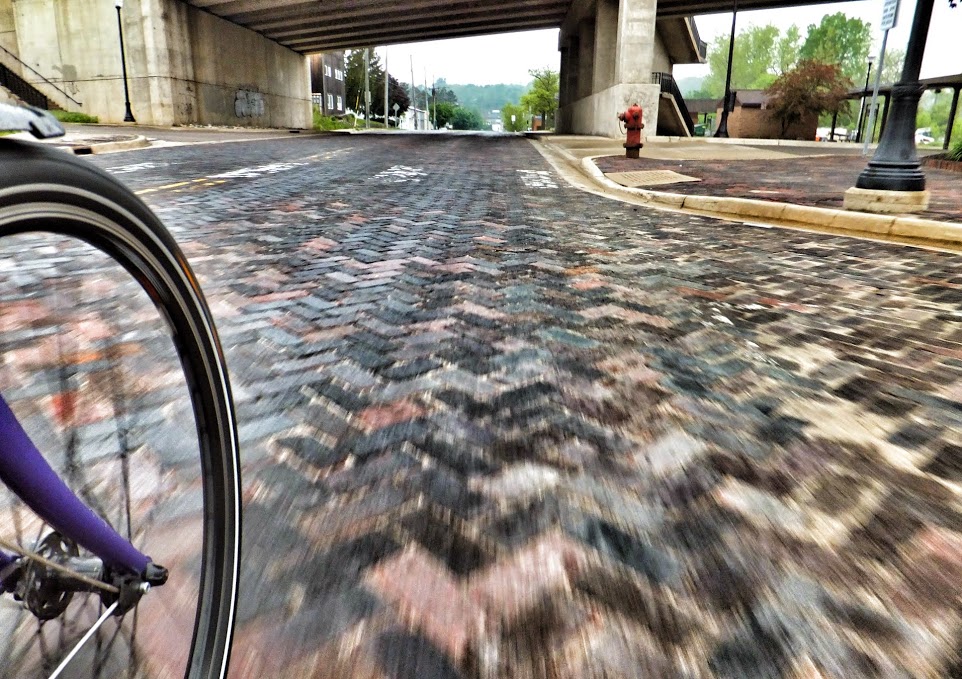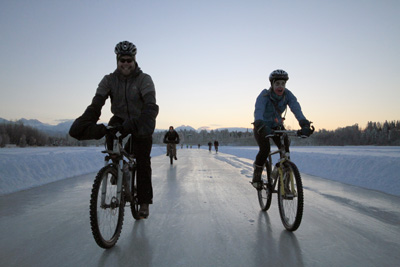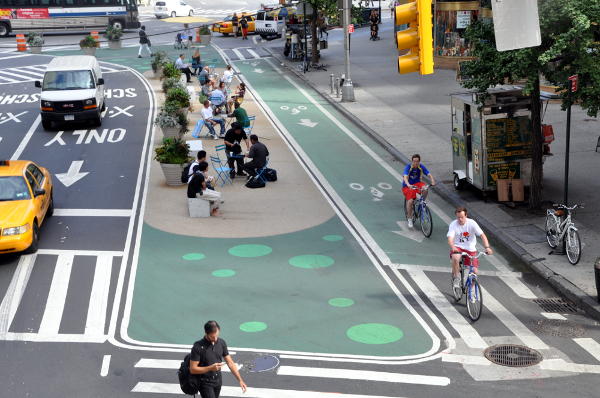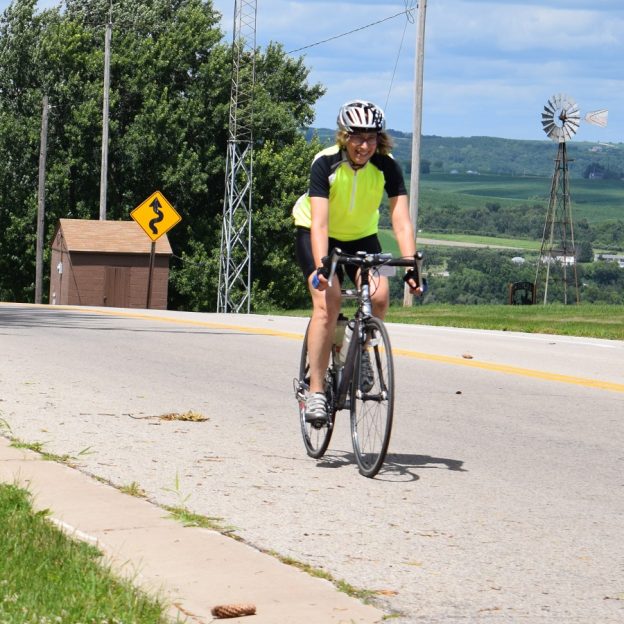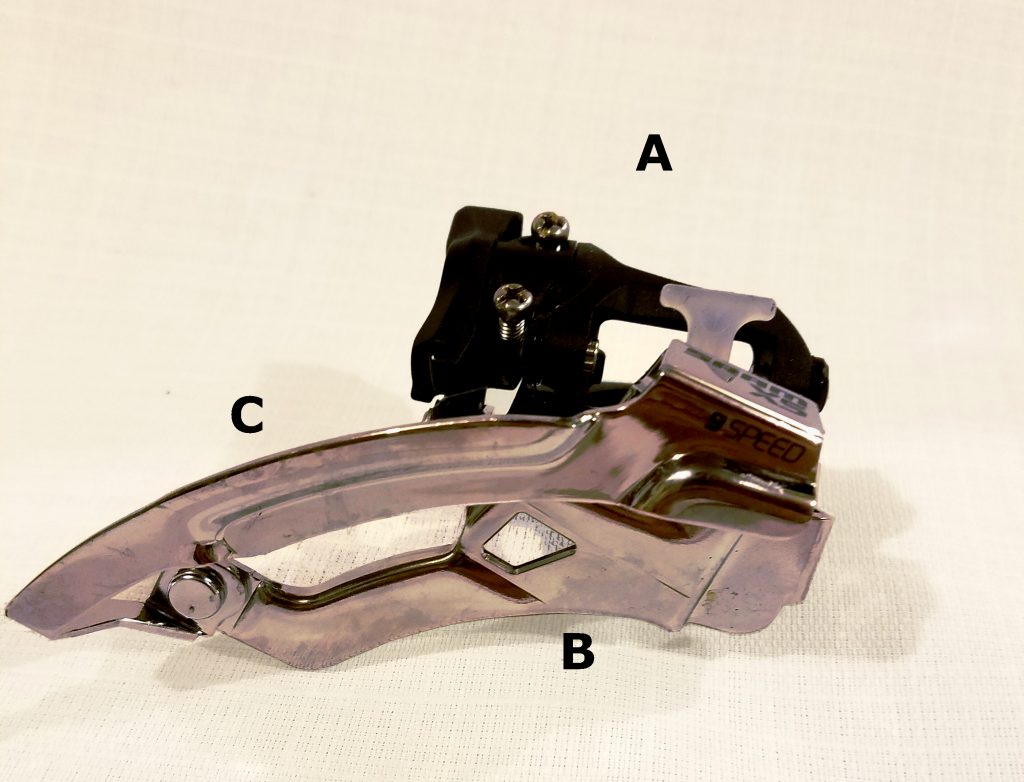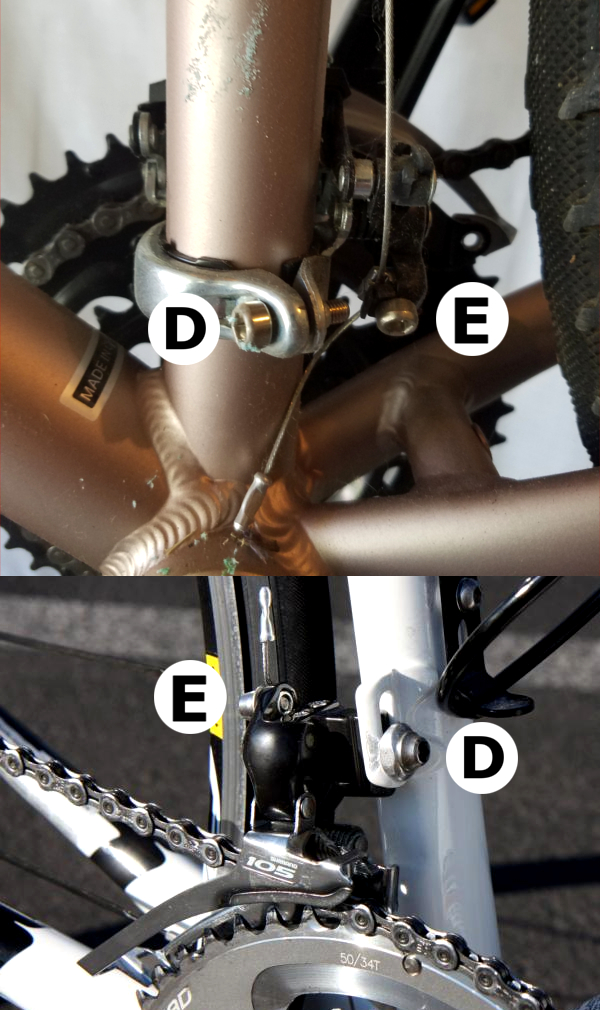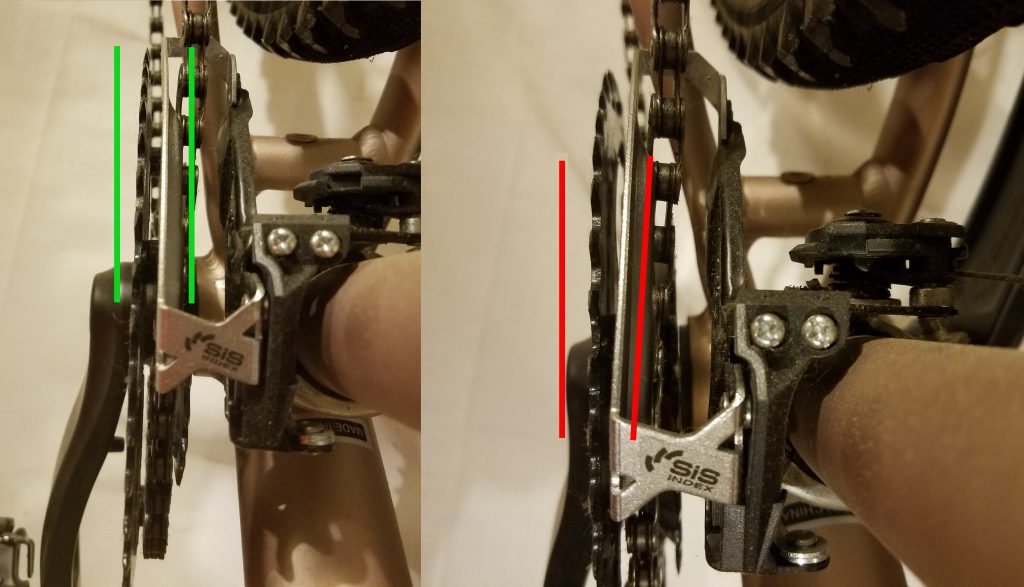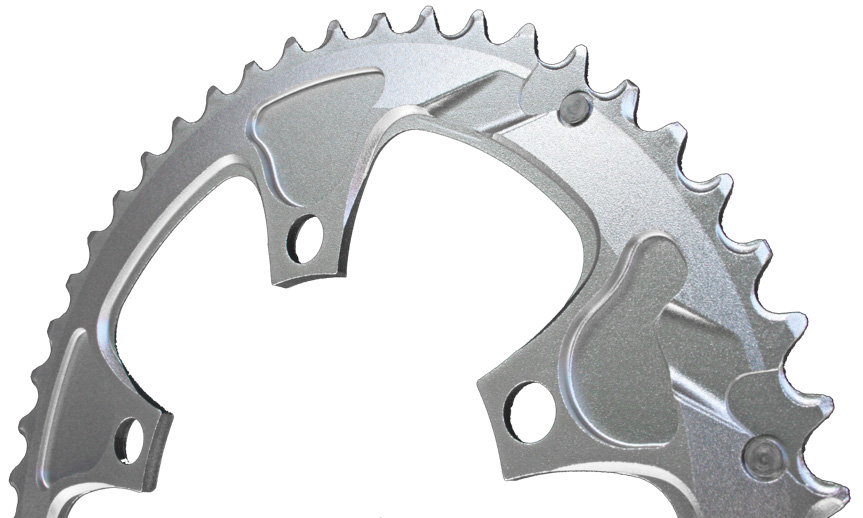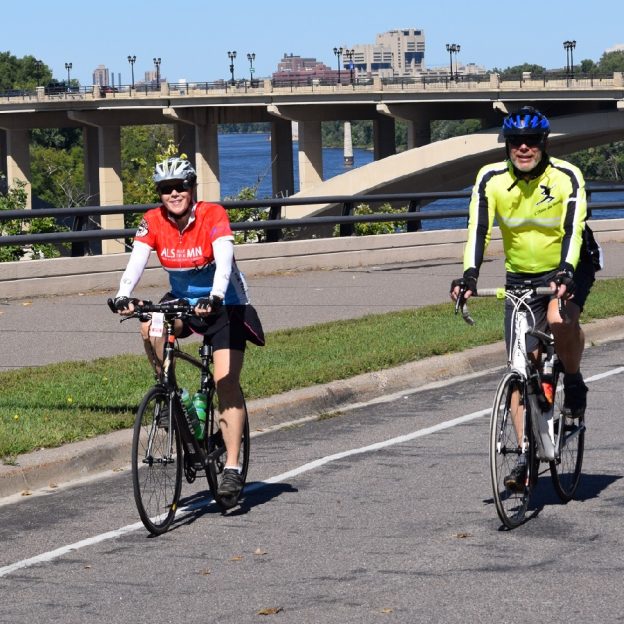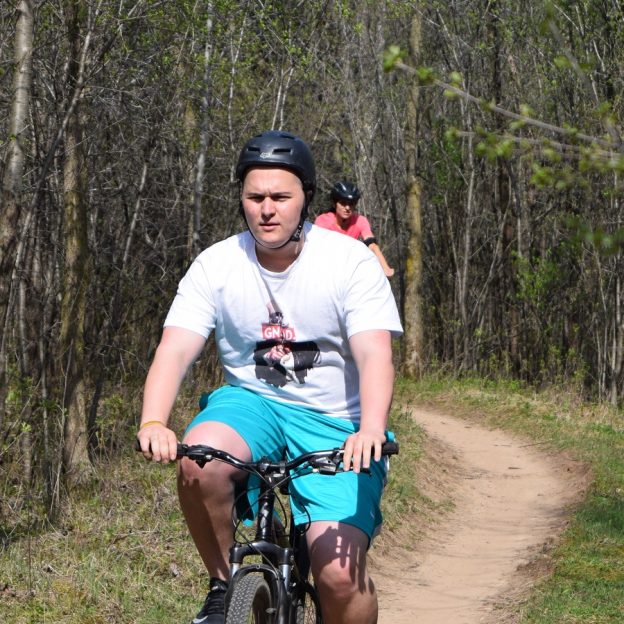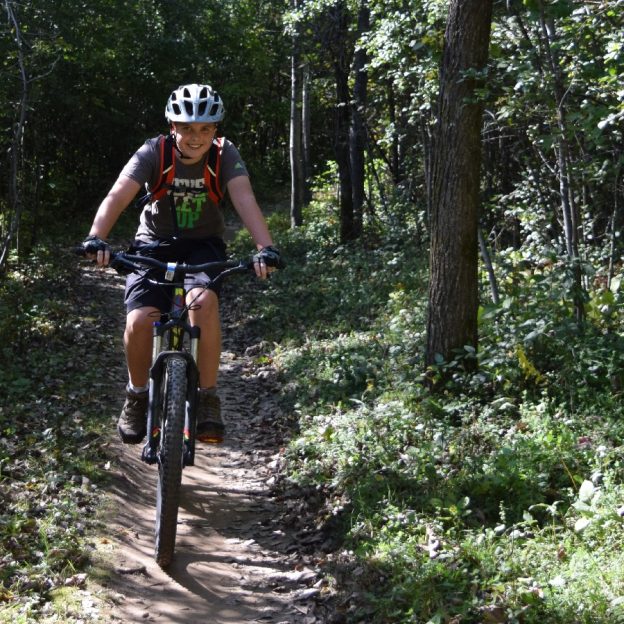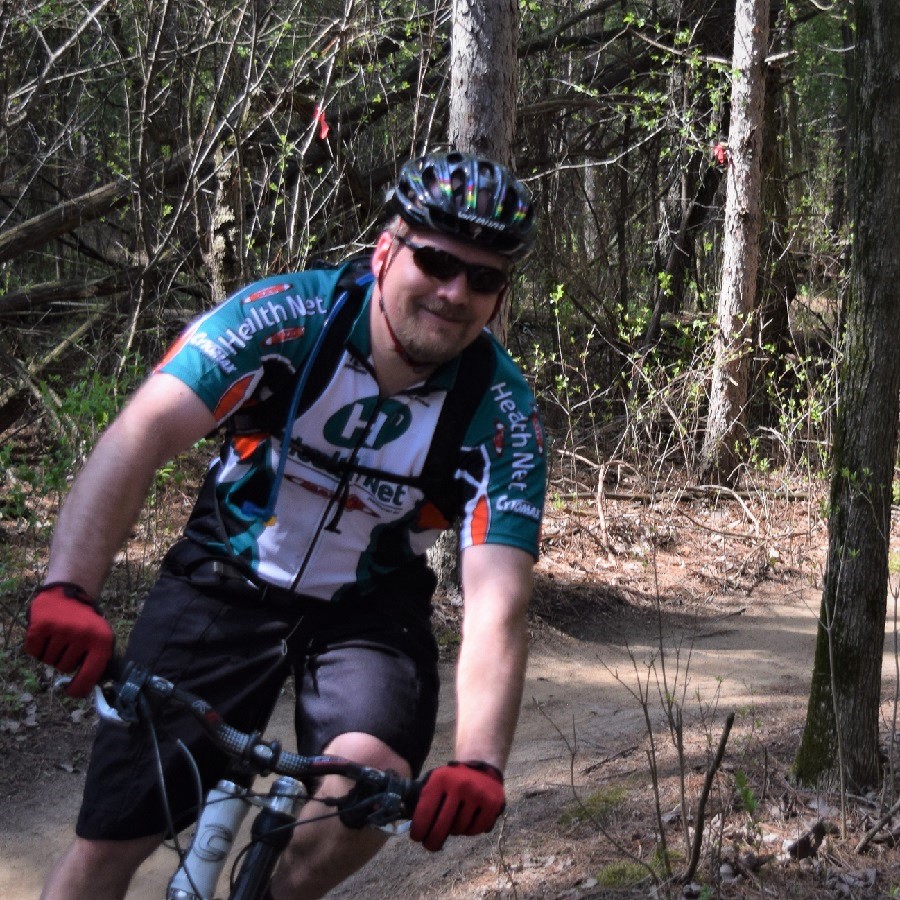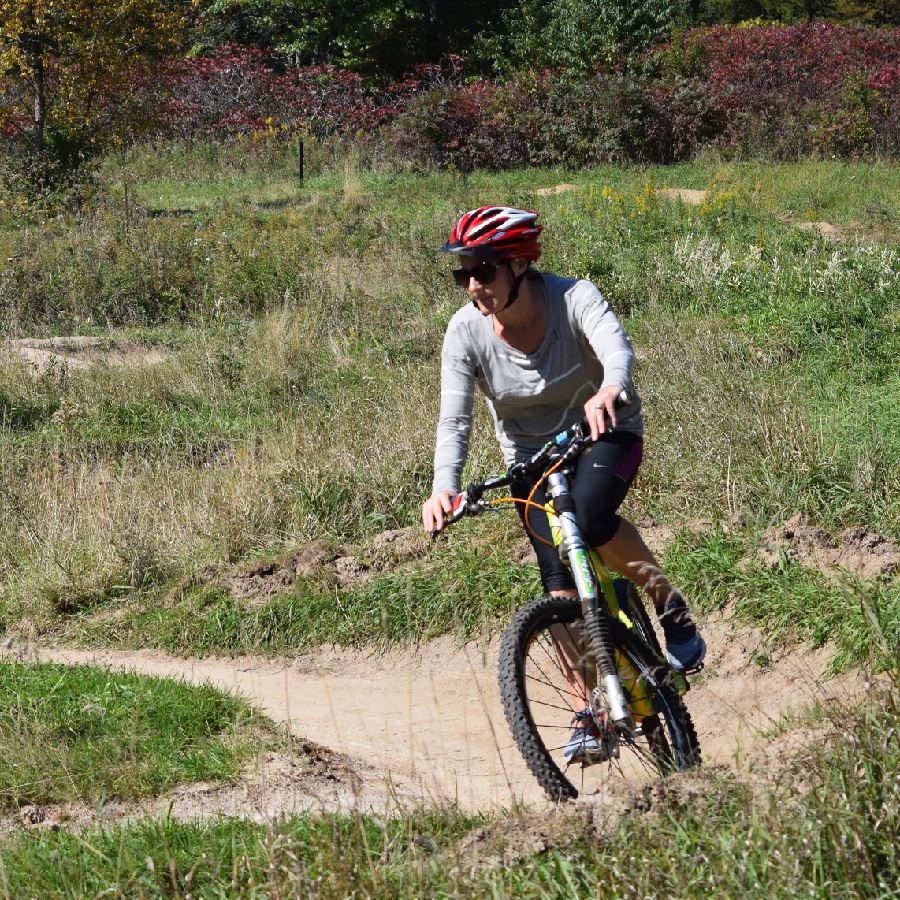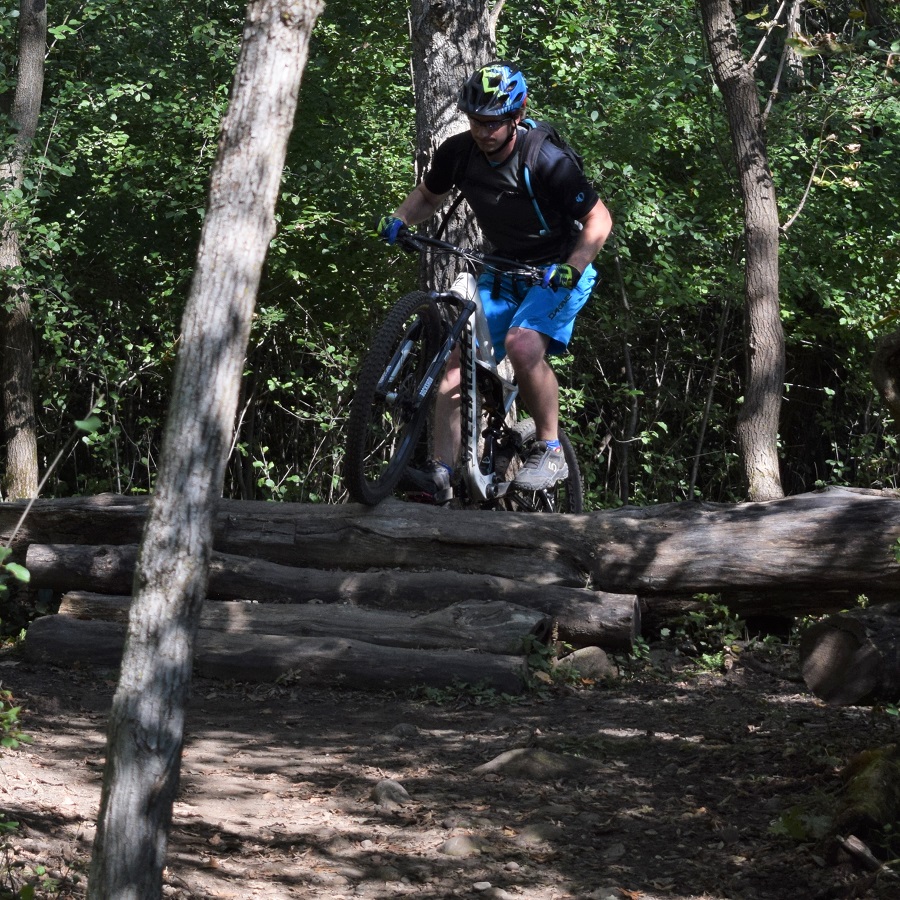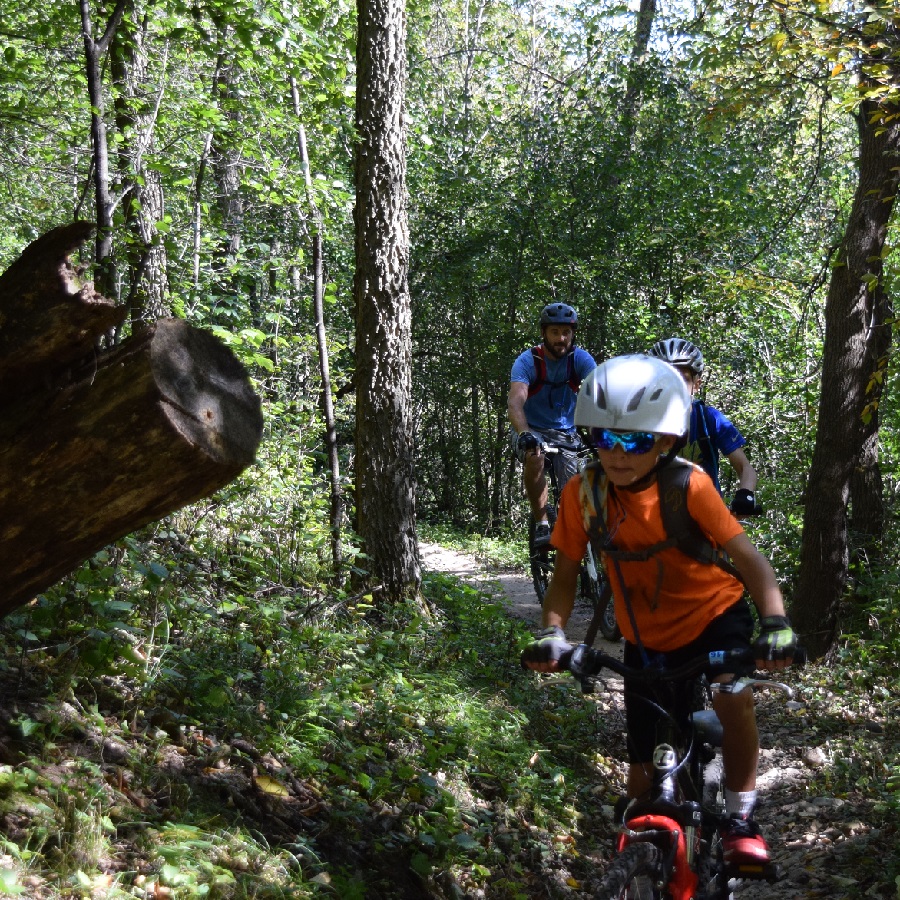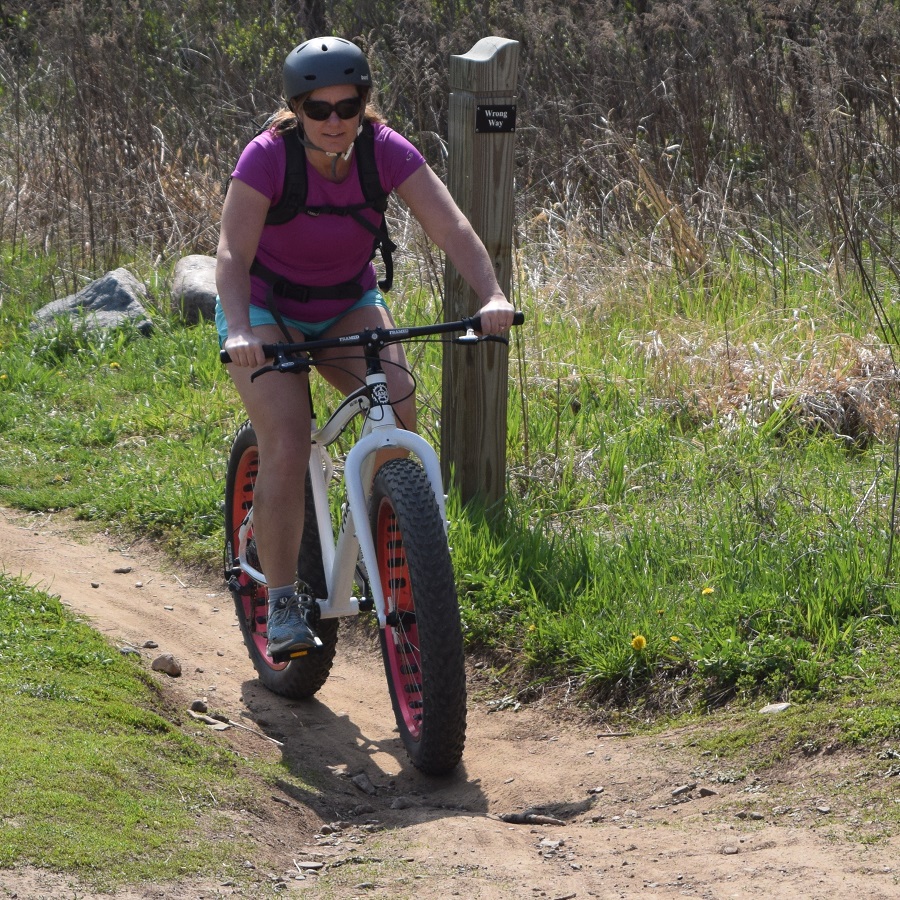By Andrew Ellis
Rolling into Anoka, MN for my next bike adventure, I felt a welcoming charm in this relaxing community with hospitality everywhere that I turned. With gear on, I was ready to this pedal this area they call the Halloween Capital of the World. The vast trail and bike-friendly road network in the Twin Cities Gateway communities were ready for me. In Anoka, my headquarters for this trip just north of Minneapolis and at the confluence of where the Rum River flows into Ol’ Man River, along the Mississippi River Trail (MRT). To my amazement, many of the historic buildings in this river town are gracing the street in and around the downtown area,

A great destination for the whole family riding the trails and bike-friendly roads in the Twin Cities Gateway.
Along with the Gateway’s bike-friendly attributes, the history of this town is another reason why you should visit Anoka. Options include the annual Anoka Heritage Home & Garden Tour that will let you immerse yourself in the town’s past. Or, stop by the local Chamber and ask about the festivities surrounding the week of Halloween. But, first, check out all the dining establishments to fuel your body before and after your ride.
Hans’ Bakery
The bike ride to Hans’ Bakery will be a nice wake up for your body, but your taste-buds and sweet tooth will be rewarded when you arrive at this local legend of pastries. This establishment started as a diner by German immigrants, now step through the door and it’s like you’re sent back to a simpler time. The menu items are on the chalkboard and what they offer is presented a brightly lit showcase window in the front. The only modern amenity they have is an I-tablet to ring you up.
They have many specialties. One of the most well known is the Texas Donut. Its name speaks for itself and comes in a couple of different versions. No political jokes here, but its larger than most peoples’ hands.
Avant Garden
This little cafe tucked into historic downtown area is a great place to stop by if you’re looking for a supreme coffee fix, but want to venture away from the big chains. It’s got everything you’d want from a popular cafe too. In addition, their own unique daily sandwich options can be enjoyed with a Coke from a glass bottle. With an indie vibe that would make it a perfect fit in a big urban setting, the staff there made it extra special.
Anoka Heritage Home & Garden Tour
Thankfully you’ve eaten because it’s time for a historic event. The Anoka Heritage Home & Garden tour will take you on a very memorable journey in Anoka’s history. It’s a self-guided tour with 17 stops that include area such as the historic Slabtown and Christian Hall neighborhoods. You’ll find out the origins on their names and stories from its first residents.
There are actually two stops on the tour that have made their way onto the coveted National Registry of Historic Places. The Ticknor Hill Bed and Breakfast is the firsts and still provides guests with small-town hospitality while they visit. The second is the Woodbury House that is home to the Mad Hatter Restaurant and Tea House. These are just a few of the many waiting for you to come and explore.
Mississippi River Trail
Once you finish with the history tour you may want to hit some more trails before the sun starts to set. You’re in luck, the Northstar Train isn’t far from where you are and can take you upstream to a station along the MRT to ride back. Just buy a ticket and hop on board with your bike, the train will drop you off close to the Mississippi River Trail so you have plenty of time to ride your bike back. The river itself flows close to downtown Anoka so you can make your way back on the MRT pretty easily.
10K Brewery
There’s nothing like a cold beer to reward yourself after a day of riding. This is the only local brewery on this side of the Twin Cities Gateway and it has a calendar full of events. Your taste buds can enjoy a wide variety of brews such as their Amber. While quenching your thirst enjoy some trivia or live music from local artists.
A night of art in Anoka

Come by bike or car and see one of the shows like ‘Lady Pirates of Captain Bree’ at the Lyric Arts Main Street Stage.
Now that you packed in some touring miles and your palate has been satisfied you may be ready to immerse yourself in the local arts scene. One of the main attractions is the Lyric Arts Main Street Stage. Here you’ll be able to escape as actors and actresses bring you into different worlds with numerous productions throughout the year.
Reward yourself with an ice cream treat
Depending on when you get done with your ride, you can always head on over to Two Scoops for some great ice cream. It’s a very comfortable place with everything from ice cream in a cone to sundaes. It even has a small candy section that brings to mind the big candy stores many small towns used to have.
The main event in Anoka happens each October
Anoka has many more happenings all throughout the year that you’ll definitely want to check out. On July 8th come by for Riverfest, which is one of the largest craft fairs in the Twin Cities. One of the most memorable events is the Anoka Halloween celebration where you will find spooktacular events throughout October.
Known as the Halloween Capital of the World, the city brings out all the stops with everything from the largest pumpkin contest to a scavenger hunt. There are also two main parades: Light Up the Night and the Grand Parade that takes place before Halloween.
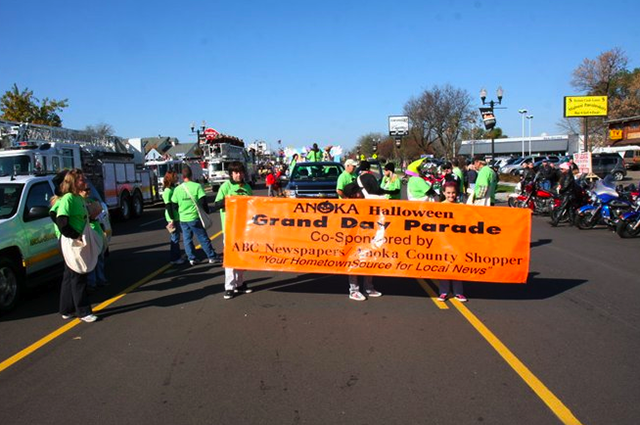
The finale of the Halloween Capitol of the World is the Grand Day Parade – the largest in the state.
So come and discovering Anoka’s history, food, and bike-friendly attributes for your #nextbikeadventure in the Twin Cities Gateway.
